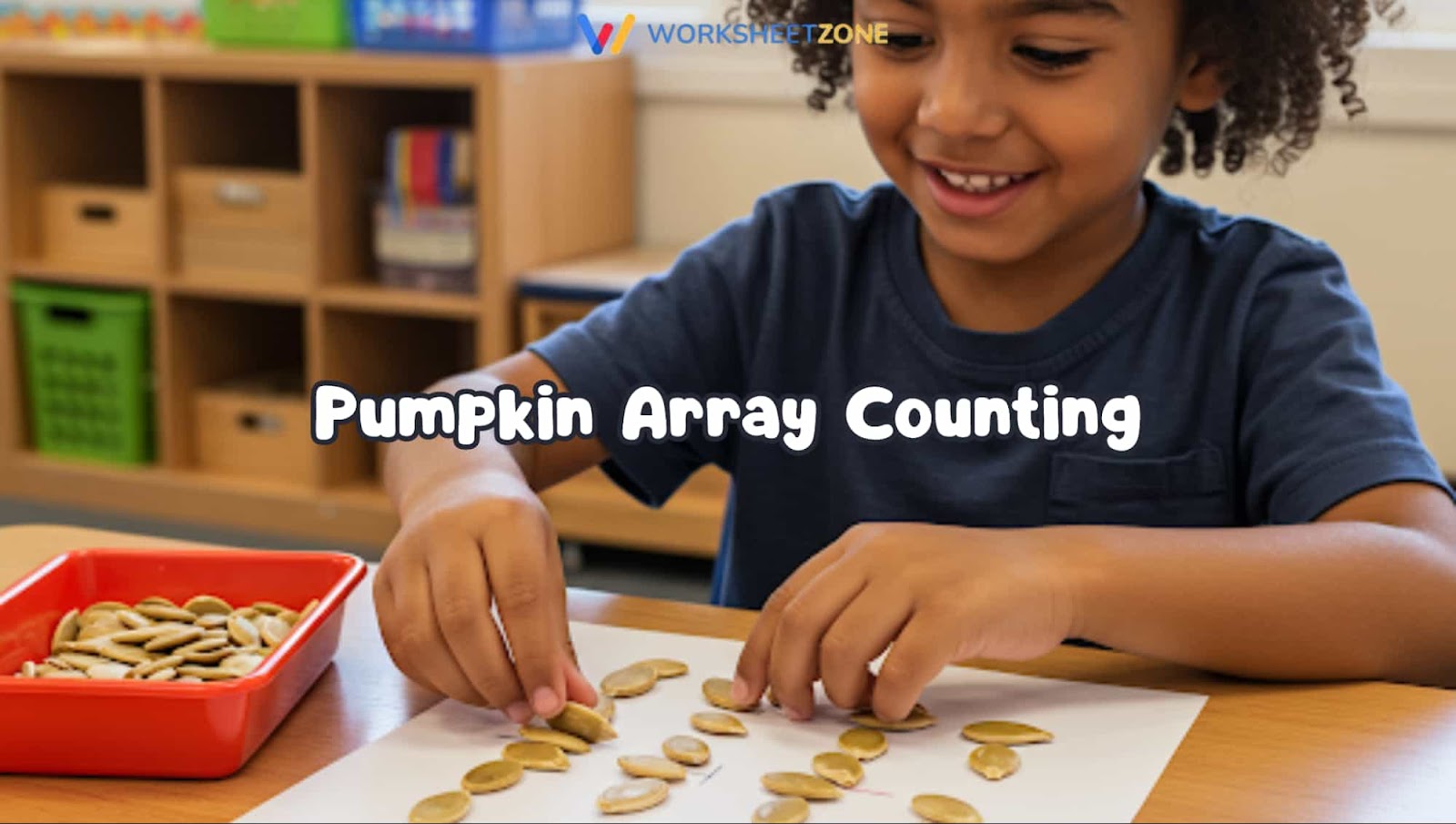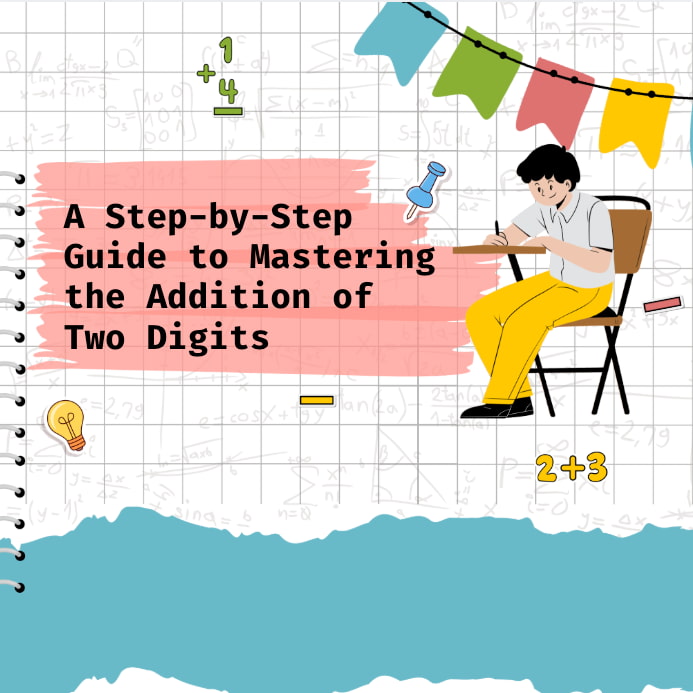As fall brings pumpkins, colorful leaves, and crisp air into the classroom, it’s the perfect time to add pumpkin math activities to your lessons. These activities provide students with a fun, hands-on way to practice skills like counting, measuring, and graphing.
These engaging tasks also encourage creative thinking and problem solving, making math both meaningful and fun. From estimating weight to designing symmetrical pumpkins, these fall-themed activities bring math to life in a festive way.
15+ Pumpkin Math Activities
Here are some fun and hands-on activities to get students practicing math skills, from counting to measuring:
1. Pumpkin Seed Counting
Pumpkin seed counting is one of the simplest yet most effective math activities, helping students practice counting, number recognition, and estimation skills. By predicting the number of seeds inside a pumpkin and then counting them, students can compare their predictions with the actual result.
This pumpkin math activity also encourages teamwork and develops critical thinking as students discuss why their estimates might differ from reality.

Materials Needed:
- Small pumpkins (one per group)
- Bowls
- Counting mats
- Markers
How to Do:
- Split students into small groups, giving each a pumpkin.
- Have students estimate the number of seeds inside.
- Cut open the pumpkins and scoop out the seeds.
- Rinse seeds and count them, grouping by tens for easier counting.
- Compare estimates with the actual number.
2. Pumpkin Seed Multiplication
Pumpkin Seed Multiplication turns a classic fall activity into an exciting math lesson. Students open up a pumpkin, scoop out the seeds, and use them to practice making equal groups.
By sorting the seeds into small piles—like groups of 2, 5, or 10—they explore the concept of multiplication in a visual and tactile way. This activity helps reinforce repeated addition, introduces the idea of arrays, and makes abstract math feel more concrete and engaging.

Materials Needed:
- Pumpkin seeds
- Small containers
- Multiplication charts
How to Do:
- Group seeds into equal piles (e.g., groups of 5).
- Multiply the number of seeds per group by the number of groups
- Write multiplication equations and discuss results.
3. Pumpkin Array Counting
Creating arrays with pumpkin seeds helps students understand multiplication as repeated addition. By arranging seeds in rows and columns, they visualize math problems more concretely. This method also supports understanding factors and basic multiplication facts.

Materials Needed:
- Pumpkin seeds
- Grid paper
- Markers
How to Do:
- Divide students into pairs and give each pair a pile of seeds.
- Instruct them to create arrays (e.g., 3×4, 5×2) using the seeds.
- Have them write the multiplication sentence that matches each array.
- Challenge students to find different arrays for the same product.
4. Pumpkin Number Line
A number line made from pumpkins is a great way to practice sequencing and basic arithmetic. Students arrange numbered pumpkins in order and use them for counting exercises, addition, or subtraction. This visual representation reinforces the concept of numerical order and intervals.

Materials Needed:
- Mini pumpkins
- Markers
- Long piece of string
How to Do:
- Write numbers on each pumpkin.
- Lay the string on the floor as a number line.
- Place pumpkins in numerical order along the line.
- Discuss the differences between consecutive numbers.
5. Pumpkin Math Story Problems
Using pumpkin-themed word problems makes math more relatable. Students solve addition, subtraction, multiplication, or division problems centered around pumpkins. This approach helps them practice problem-solving and apply math concepts in practical scenarios.

Materials Needed:
- Worksheet templates
- Markers
- Pencils
How to Do:
- Write problems such as, “If one pumpkin has 50 seeds and another has 70, how many seeds in total?”
- Students solve the problems and explain their reasoning.
6. Pumpkin Perimeter and Area
Calculating the perimeter and area of a pumpkin is one of the essential math activities, helping students practice measurement skills. Students use measuring tapes to find the perimeter and calculate the area by tracing the base on paper.
Comparing results from different pumpkins helps reinforce concepts of size and space.

Materials Needed:
- Pumpkins
- Measuring tapes
- Record sheets
- Markers
How to Do:
- Place the pumpkin on a flat surface and measure around its base to find the perimeter.
- Trace the pumpkin base on a large sheet of paper to estimate the area.
- Compare the measurements of different pumpkins.
- Discuss how perimeter and area are related and what factors influence their differences.
7. Pumpkin Weight Estimation
Estimating the weight of a pumpkin helps students develop their ability to make educated guesses and compare actual measurements. Students practice math skills by predicting the weight, recording their estimates, and then using a scale to find the actual weight.
This activity also allows for discussions about measurement accuracy and units of weight.

Materials Needed:
- Various sizes of pumpkins
- Weighing scale
- Record sheets
- Markers
How to Do:
- Display several pumpkins of different sizes.
- Ask students to guess the weight of each pumpkin.
- Weigh each pumpkin and record the actual weight.
- Compare the estimated and actual weights, discussing why some predictions were more accurate.
8. Pumpkin Measurement Race
Students practice measuring the height and circumference of pumpkins using rulers or measuring tapes. Recording their findings helps reinforce the concept of measurement units, and comparing different pumpkins promotes analytical thinking. This hands-on activity is great for building practical math skills.

Materials Needed:
- Pumpkins
- Measuring tapes
- Record sheets
- Stopwatch
How to Do:
- Set up a station with a pumpkin and a measuring tape.
- Have students measure the pumpkin’s height, circumference, and stem length.
- Time each group to see who measures the fastest and most accurately.
9. Pumpkin Geometry
Students explore geometric concepts by examining the shapes and angles within a pumpkin. Measuring the circumference and calculating the area helps develop spatial awareness. Drawing cross-sections or analyzing symmetry also deepens their understanding of geometry.

Materials Needed:
- Pumpkins
- Knives (for teacher use)
- Rulers
- Protractors
How to Do:
- Cut pumpkins into wedges.
- Measure angles of the slices.
- Discuss symmetry and geometric properties.
10. Pumpkin Estimation Jars
One of the engaging pumpkin math activities is using pumpkin estimation jars to develop estimation skills. Students guess the number of seeds or small items in a pumpkin-shaped jar, then count the items to see how accurate they were.
This activity encourages logical reasoning and helps refine estimation techniques.

Materials Needed:
- Transparent jars
- Pumpkin seeds
- Labels
How to Do:
- Fill a jar with seeds and seal it.
- Have students write their estimations.
- Open the jar, count the seeds, and compare.
- Reward the closest estimation.
11. Pumpkin Graphing
Sorting pumpkins by size, shape, or color is a great way to practice categorization and comparison skills. Students learn to observe and classify different characteristics, enhancing their ability to recognize patterns and group items logically.
This activity also supports vocabulary development as they describe their sorting criteria.

Materials Needed:
- Graph paper
- Markers
- Pumpkins of varying sizes
- Measuring tape
How to Do:
- Measure the circumference of each pumpkin.
- Record the data and create a bar graph showing the pumpkin sizes.
- Discuss which pumpkin is the largest and smallest and how they compare.
12. Pumpkin Pie Chart
Creating pie charts using data collected from pumpkin activities helps students understand how to visually represent parts of a whole. Students can compare seed counts, pumpkin sizes, or any other data set, making math more accessible and helping them interpret data effectively.

Materials Needed:
- Data from previous activities
- Pie chart templates
- Crayons or markers
How to Do:
- Use data from the seed counting or weight estimation activities.
- Draw pie charts to represent the collected data.
- Color each section to visually compare the numbers.
13. Pumpkin Shape Patterns
Pumpkin Shape Patterns helps students recognize and extend patterns using pumpkins of different shapes, sizes, or colors. By arranging paper pumpkins—such as tall, short, round, or oval—in repeating sequences, students practice identifying patterns like AB, AAB, or ABC.
This activity builds foundational math skills by encouraging students to observe, predict, and continue sequences, all while engaging with a fun fall theme. It’s perfect for developing logical thinking and visual discrimination in early learners.

Materials Needed:
- Pumpkin cutouts (various shapes and colors)
- Glue
- Construction paper
How to Do:
- Introduce pattern concepts (e.g., ABAB, AABB).
- Arrange pumpkin shapes to form a pattern on the board.
- Have students create their own patterns using cutouts.
- Display their patterns on a classroom bulletin board.
14. Pumpkin Symmetry Drawing
Symmetry drawing with pumpkin shapes helps students practice creating mirror images. Folding a paper pumpkin in half and drawing the other side promotes spatial reasoning and symmetry recognition. This artistic approach to math is both educational and creative.

Materials Needed:
- Pumpkin outline printouts
- Rulers
- Markers
- Scissors
How to Do:
- Fold the pumpkin outline printout in half vertically.
- Cut along the fold to create a half-pumpkin template.
- Ask students to draw the other half of the pumpkin to create a symmetrical shape.
- Decorate the symmetrical pumpkins and display them in the classroom.
15. Pumpkin Fraction Pies
One of the fun math activities involving pumpkins is creating fraction pies. Students learn to represent fractions by dividing a pumpkin into equal parts and labeling each piece.
This activity helps build an understanding of how fractions represent parts of a whole and supports visual learning.

Materials Needed:
- Orange paper circles
- Scissors
- Markers
How to Do:
- Cut the paper circles into equal parts (halves, thirds, quarters).
- Label each slice with the appropriate fraction.
- Ask students to reassemble the pumpkin and discuss the fractions.
Sum up
Pumpkin math activities not only make learning enjoyable but also help students develop key mathematical skills. Integrating seasonal themes like pumpkins into lessons keeps students engaged and excited about math. Try these activities this fall, and watch your classroom come alive with learning!
If you’re looking for more seasonal math ideas, check out Halloween Worksheets from WorksheetZone and stay tuned for our upcoming posts on holiday-themed math activities. Happy pumpkin math learning!







